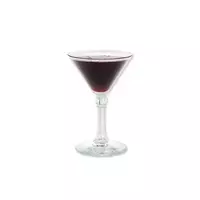Balm

The strong alcoholic drink that appeared in the middle of the 18th century, infused with healing herbs, began to be called balm. By the way, balsamos is translated from Greek - a medical remedy. However, recently it has been used not only for preventive and therapeutic purposes, but also quite often used in cooking, in particular in the manufacture of various cocktails and some dishes. Therefore, we can safely argue that the healing properties of the balm are intertwined with the excellent gastronomic qualities of this wonderful drink.
Traditionally, balm is characterized by a rich brown color, which is present due to the presence in this drink with a strength of at least 40 degrees of various herbs, fruits and roots. The production technology of any balm is quite complex and consists of several rather long stages. But the taste of the finished drink, although it resembles a medicinal mixture, but at the same time each component of the balm does not stand out much, as if complementing each other.
Types of balm
In general, balms are conditionally divided into 2 categories, which depend on the geographical affiliation of this drink. The first includes such types of balm, which are made in Russia and the countries of the former USSR. Today, their range includes about 60 items.
The second category is represented by drinks produced in the West: in Europe, the USA and some other countries. There they are usually called bitters, which means bitter. In addition, many people know such a concept as Swedish balms. These types of balm include Bittner's balm, as well as Maurer's balm. They are particularly popular and are mainly produced in Austria.
Balsam composition
The presence of a large number of beneficial properties of this drink is due to the composition of the balm, in which components such as extracts of healing animal and vegetable raw materials are used along with alcohol. These may be deer horns unusual for us and the more common leaves of wormwood, stranglefish, St. John's wort, donut, bison and yarrow in our country. In addition, the roots of kalgan, diagbel, levzea, fruits of badyan, coriander, bird cherry or dill are quite often used.
The balm sometimes has up to 40 components, and sometimes even more. Due to this complexity of manufacture, most balms are produced in small quantities and in a relatively small assortment compared to other types of alcoholic beverages.
Benefits of Balsam
It is no secret that the benefits of balm make this drink popular all over the world, because it is an excellent tonic for overwork and general weakness of the body, as well as strong physical and mental exertion.
As a preventive agent, it is recommended to use it in the presence of diseases such as gastritis, peptic ulcer of the stomach and duodenum, dyskinesia, as well as indigestion. In addition, the benefit of balm lies in the presence of special substances in the composition of this drink, which have imunnomodeling properties.
balm 248 kCal
Energy value of balsam (Ratio of proteins, fats, carbohydrates - ju):
Proteins: 0 g (~ 0 kCal)
Fats: 0 g (~ 0 kCal)
Carbohydrates: 6.4 g (~ 26 kCal)
Energy ratio (bj | y): 0% | 0% | 10%
 Español
Español Français
Français Português
Português Русский
Русский 简体中文
简体中文 繁體中文
繁體中文 日本語
日本語 한국어
한국어 العربية
العربية Türkçe
Türkçe Қазақ
Қазақ Deutsch
Deutsch Italiano
Italiano Українська
Українська
